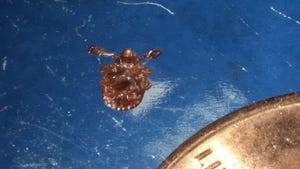
Growing irrigated cotton in the Southwest demands effective system and crop management to conserve water resources and improve profit potential.
To schedule irrigation efficiently, producers need to understand when cotton needs the most water and when they can begin to taper off later in the season, says Randy Boman, research director, Oklahoma State University Southwest Research Station at Altus, and state Extension cotton leader.
The cotton water use curve provides a visual aid for irrigation timing, he said in a discussion of requirements for irrigating the crop at the recent Oklahoma Irrigation Conference at Fort Cobb.
The cotton water use curve shows peak demand occurs from about 75 days after planting through about 115 days, or from first blooms until first open bolls.
For the latest on southwest agriculture, please check out Southwest Farm Press Daily and receive the latest news right to your inbox.
Texas AgriLife Irrigation Research Engineer Jim Bordovsky offers a four-point plan to improve irrigation efficiency. The program includes:
Employ a more efficient delivery system from furrow irrigation to a center pivot to low energy precision application (LEPA) and to subsurface drip irrigation (SDI). “Drip will become more and more important,” Boman says.
Improve performance of the irrigation system. Use appropriate nozzles, adjust pressure, and maintain the system to maximize water use.
Use evapotranspiration or ET (including Mesonet data) to schedule irrigation.
Reduce non-water production practice limitations. Boman says variety selection, fertility and pest management all affect irrigation efficiency. “The variety selected can make a significant difference.”
Opportunities for reduction
Cotton producers should also look for opportunities to cut back on irrigation in season, he says. They might cut back on irrigation on a system with capacity greater than crop demand, or following significant seasonal rainfall, or late in the growing season after the crop is past peak water use.
Soil water monitoring also offers opportunities for cotton producers to improve irrigation efficiency, Boman says. “We aren’t seeing much adoption of these tools, but I think this provides a good opportunity for crop consultants. In the future, we will need more irrigation scheduling attention and more training.
“We have a lot of technology that will be available and will come of age in the next few years. Some of these systems will be expensive, so producers may want to check with the Natural Resources Conservation Service (NRCS) for cost-share programs.”
He also discussed timing of irrigation termination with either subsurface drip or center pivot systems.
Final irrigation
“The value of continued center pivot or SDI irrigation after bolls begin to open is probably questionable, unless high ET is encountered and the field has depleted profile moisture,” Boman says.
Boll opening typically is about 2 percent to 5 percent per day after opening starts. “This implies that if the last irrigation is made at a few percent open bolls, it should take the field about 10 days to reach 30 percent to 60 percent open bolls, and thus near maturity.”
In some years, 2011 for instance, cotton producers can’t provide 100 percent ET replacement, even with excellent water supply. In those cases, they may be better off if they irrigate half a circle instead of a full circle — concentrating water on fewer acres.
“Research shows that cotton does respond to moderate levels of deficit irrigation,” he says.
Boman also noted that nodes above white flower (NAWF) maturity scale and the Cotman program can be used to determine when to terminate irrigation.
“When cotton is past cutout, it’s more risky to make cotton from that fruit,” Boman said. “We don’t want to spend a lot of time and effort on bolls that have a low probability of making it into the picker basket.”
About the Author(s)
You May Also Like






